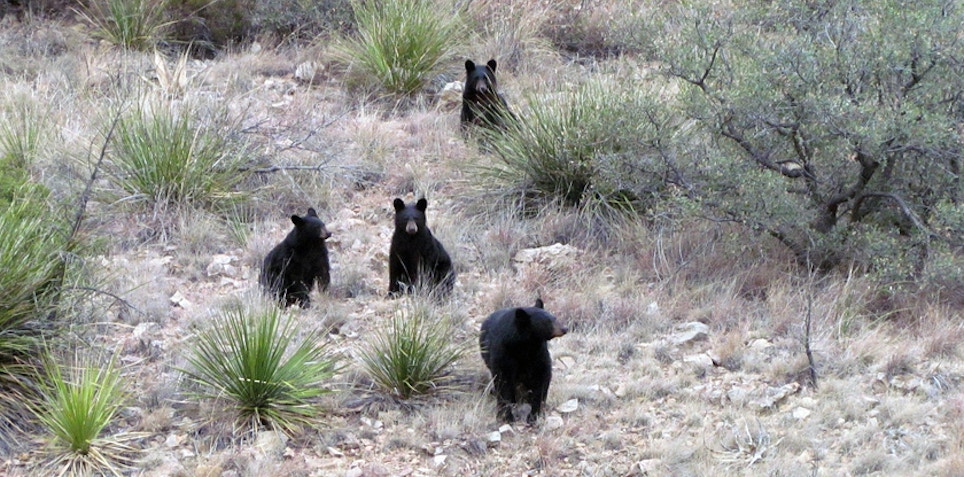
Black bear numbers are small in far West Texas, but they appear to be on the increase. Photo: iStockphoto.com/46travels
Black bears in the far West Texas region are being studied by Borderlands Research Institute at Sul Ross State University and the Texas Parks & Wildlife Department, both of which are encouraged for the continued return of the species. Black bears are rare in the Lone Star State, after significant declines during the 1940s and ’50s,
“It all started quite a number of years ago. Back in the 1990s, people were noticing black bears were starting to come into Big Bend once again. From there, the bears have been slowly being noticed outside the park farther and farther from the Mexican border,” Amanda Veals Dutt, a post-doctoral research specialist at BRI, said. “The impetus of our project is to understand where they’re coming from, where they’re going, what they’re doing and how we can protect the habitat and resources for them as they recolonize Texas, so we can make sure we have a healthy bear population well into the future.”
Researchers with BRI and TPWD are outfitting the bears with GPS tracking collars. They’re working with private landowners and have collared about 10 bears. Most are young males. They hope to collar about 20 more, to increase the amount of data. It also will help inform about potential conflicts between landowners, hunters and others.
“We really hope to capture more of the behavior and interactions with people as more and more bears come into this area, so we can have a richer sense of what’s going on on the landscape to better inform Texas Parks and Wildlife and landowners on how to coexist, because really, the bears are just coming into these areas,” Veals Dutt told the Texas Farm Bureau Radio Network. “If we can get on top of these conflicts now, when there are more bears, hopefully these strategies will be well implemented.
“Bears don’t know that the corn is just for deer, so they like to pull open the bottoms and just eat their fill,” Veals Dutt said about hunters with automatic feeders. “To make sure they don’t have damaged feeders that can cost potentially hundreds of dollars and/or they’re not losing money in having to more frequently replace feed, TPWD has been working to electrify that area so deer can hop over and still get access, but bears aren’t able to do that.”
The research team has been advising landowners and hunters about different electric fencing deterrents around the feeders. So far, it seems to be working.
“There’s been some great video evidence of a bear coming up, sniffing, getting a light shock on the nose, and then saying, ‘Oh no, thank you. I’m not coming back to this again,’” Veals Dutt said. “It’s not enough to seriously injure them, but enough to startle them and tell them this is not a place they can find food.”
Black bears are protected in Texas as a threatened species. The number of bears in the state is unknown.





